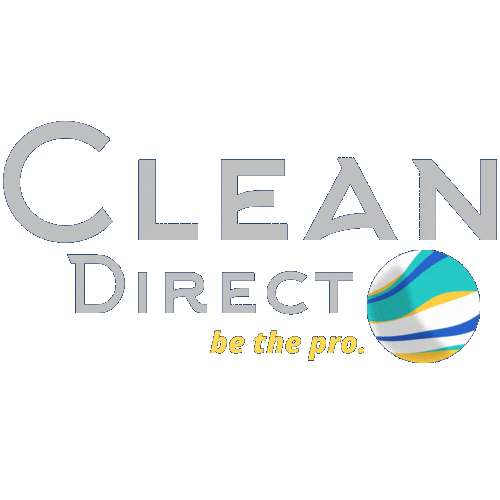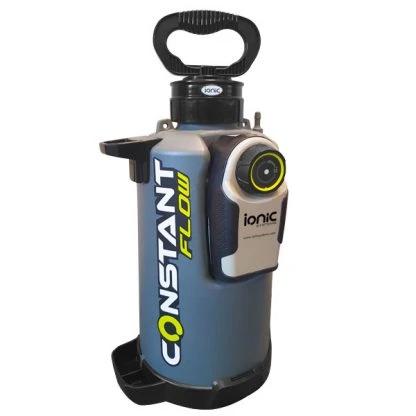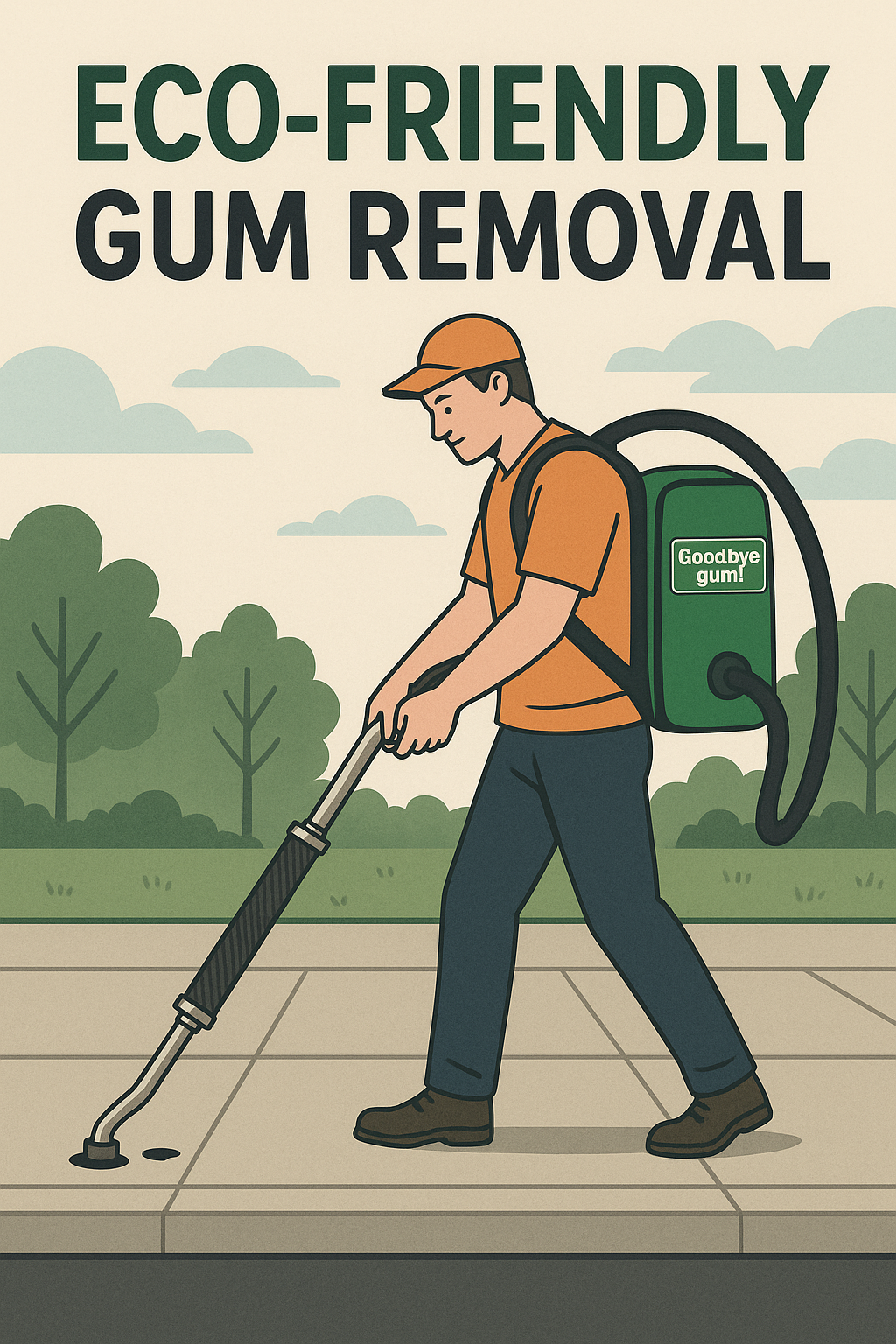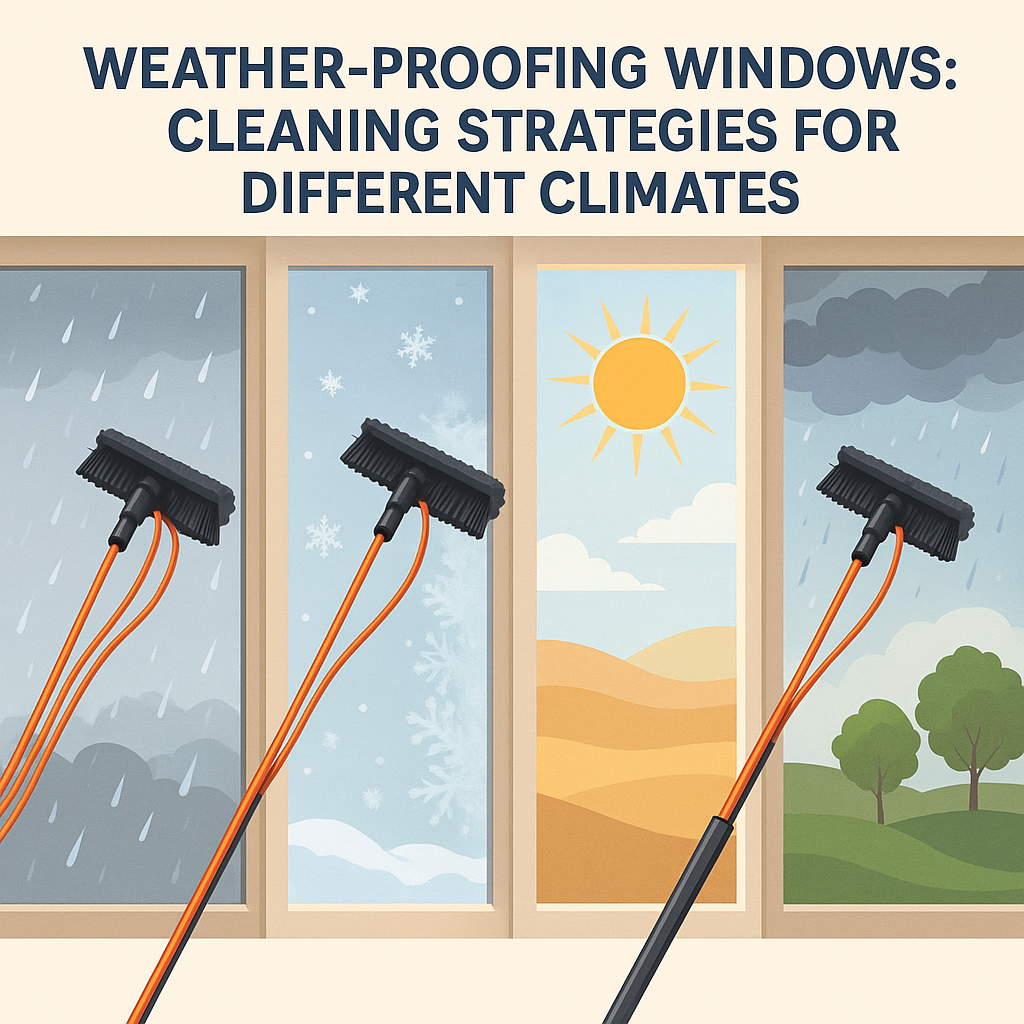
The Difference Between Soft and Pressure Washing
Ever wondered why some cleaning jobs require a gentle touch while others need a high-powered blast? The answer lies in the difference between soft washing and pressure washing. Let's explore these methods and discover which one is right for your cleaning needs.
Soft washing is a method that uses low pressure and specialized solutions to remove mildew, bacteria, algae, and other organic stains from surfaces. It relies on the power of chemicals to clean and disinfect rather than high-pressure water.
- Low Pressure: Soft washing operates at a pressure below 500 PSI.
- Cleaning Solutions: Uses biodegradable chemicals to break down dirt and grime.
- Applications: Ideal for cleaning delicate surfaces like shingle roofs, painted wood, and outdoor furniture without causing damage.
Advantages of Soft Washing:
- Surface Protection: The low-pressure approach ensures that delicate surfaces such as shingles, wood, and vinyl siding are not damaged during the cleaning process.
- Long-Lasting Results: Soft washing not only cleans surfaces but also kills mold, mildew, algae, and bacteria at the root, preventing them from growing back quickly.
- Eco-Friendly: The use of biodegradable cleaning solutions makes soft washing a more environmentally friendly option.
Soft Washing Products:
Constant Flow Kit
The Constant Flow Kit ensures a consistent flow of water, making soft washing more efficient and effective. This is particularly useful for large-scale cleaning tasks where maintaining a steady flow of water is crucial.
- Key Features: Helps prevent water flow interruptions, improves cleaning efficiency, and is easy to install and use.
Ionic Systems Foamion™ Portable
This portable foam applicator is perfect for soft washing. It allows for easy application of cleaning solutions, ensuring thorough coverage and effective cleaning without damaging surfaces.
- Key Features: Lightweight, portable, easy to use, and ensures even distribution of cleaning foam.
What is Pressure Washing?
Pressure washing uses high-pressure water to remove dirt, grime, mold, and other contaminants from surfaces. It's a more aggressive cleaning method, best suited for hard surfaces.
- High Pressure: Typically operates between 2,000 to 4,000 PSI.
- No Chemicals Needed: Often just water is enough to clean the surface due to the high pressure.
- Applications: Perfect for tough surfaces like concrete driveways, brick walls, and sidewalks.
Advantages of Pressure Washing:
- Efficiency: High-pressure water can quickly remove stubborn dirt and grime, making it a fast and efficient cleaning method.
- Versatility: Pressure washing is suitable for a wide range of hard surfaces, including patios, driveways, sidewalks, and heavy machinery.
- Thorough Cleaning: The high pressure ensures that even the most deeply embedded dirt and stains are removed effectively.
Pressure Washing Products:
Water Broom Head - 4 Nozzles
This attachment is perfect for cleaning large flat surfaces quickly and efficiently. The multiple nozzles ensure even and thorough cleaning.
- Key Features: Four high-pressure nozzles, durable construction, and ideal for cleaning driveways, patios, and other flat surfaces.
Mosmatic Dual Ceiling Boom
Ideal for car washes and other high-traffic areas, this ceiling boom provides a versatile and efficient cleaning solution.
- Key Features: Dual ceiling boom design, 360-degree rotation, and made of high-quality stainless steel for durability.
Tidal Wave Full Assembly
This powerful pressure washing system is designed for industrial use, offering high efficiency and robust performance for the toughest cleaning tasks.
- Key Features: High-pressure performance, durable components, and suitable for heavy-duty cleaning applications.
Mosmatic Wand with Filter Sieve in Grip
This wand ensures that debris and contaminants are filtered out during the cleaning process, protecting the pressure washer and enhancing cleaning performance.
- Key Features: Integrated filter sieve, ergonomic grip, and durable construction.
Mosmatic HP Gun Neo 310 Bar
A high-pressure gun designed for professional use, providing reliable and powerful cleaning capabilities.
- Key Features: High-pressure capacity, ergonomic design, and durable materials for long-lasting use.
Pressure Washing Collection
Didn't find what you needed? Explore our collection of pressure washing equipment designed for various applications, from residential to industrial cleaning. With diverse product range, high-quality materials, and designed for efficient and effective cleaning.
Key Differences
Understanding the key differences between these two methods helps in selecting the appropriate one for your cleaning needs:
-
Pressure Levels:
- Soft Washing: Operates under low pressure, typically below 500 PSI, making it gentle on surfaces.
- Pressure Washing: Uses high pressure, ranging from 2,000 to 4,000 PSI, suitable for tough surfaces.
-
Cleaning Agents:
- Soft Washing: Utilizes biodegradable cleaning solutions to break down contaminants.
- Pressure Washing: Relies mostly on the force of water, often without the need for additional chemicals.
-
Surface Compatibility:
- Soft Washing: Ideal for delicate surfaces like roofs, painted wood, and outdoor furniture.
- Pressure Washing: Best for durable surfaces like concrete, brick, and metal.
-
Purpose:
- Soft Washing: Focuses on removing organic materials such as algae, mold, and bacteria.
- Pressure Washing: Aims at removing dirt, grime, and other tough residues from hard surfaces.
When to Use Soft Washing
1. Roof Cleaning:
- Safely removes algae and moss without damaging shingles. Shingle roofs are particularly vulnerable to high pressure, which can strip away the granules and shorten the lifespan of the roof.
2. Siding Cleaning:
- Gentle enough for vinyl, wood, and other siding materials. It prevents cracking and paint peeling that can occur with high-pressure methods.
3. Decks and Patios:
- Prevents splintering and damage to wooden surfaces. Soft washing maintains the integrity of the wood while effectively removing dirt and mildew.
4. Outdoor Furniture:
- Keeps furniture looking new without stripping paint. This method is perfect for maintaining the appearance and longevity of outdoor furnishings.
When to Use Pressure Washing
1. Driveways and Walkways:
- Removes tough stains and dirt from concrete and asphalt. High-pressure washing can effectively clean oil stains, tire marks, and other hard-to-remove spots.
2. Brick and Stone Walls:
- Cleans accumulated grime effectively. Pressure washing can penetrate the porous surfaces of brick and stone, removing deep-seated dirt and moss.
3. Fencing:
- Metal and vinyl fences benefit from the high pressure. It quickly removes rust, mold, and dirt, restoring the fence's original appearance.
4. Heavy Equipment:
- Ideal for industrial and construction equipment. High-pressure washing can remove mud, grease, and other tough residues from machinery and vehicles.
Choosing the Right Method
Consider the type of material, its condition, and the type of contamination when deciding between soft washing and pressure washing. Using the right method ensures effective cleaning.
Tips for Making the Right Choice:
- Assess the Surface: Identify whether the surface is delicate or durable.
- Determine the Contamination: Understand if the contamination is organic (like mold and algae) or inorganic (like dirt and grime).
Understanding the difference between soft washing and pressure washing is essential for maintaining and protecting various surfaces effectively. By choosing the appropriate method, you can ensure that your cleaning tasks are completed efficiently.
For all your cleaning equipment needs, trust Clean Direct to provide high-quality solutions tailored to your specific requirements.
Soft washing is a method that uses low pressure and specialized solutions to remove mildew, bacteria, algae, and other organic stains from surfaces. It relies on the power of chemicals to clean and disinfect rather than high-pressure water.
- Low Pressure: Soft washing operates at a pressure below 500 PSI.
- Cleaning Solutions: Uses biodegradable chemicals to break down dirt and grime.
- Applications: Ideal for cleaning delicate surfaces like shingle roofs, painted wood, and outdoor furniture without causing damage.
Advantages of Soft Washing:
- Surface Protection: The low-pressure approach ensures that delicate surfaces such as shingles, wood, and vinyl siding are not damaged during the cleaning process.
- Long-Lasting Results: Soft washing not only cleans surfaces but also kills mold, mildew, algae, and bacteria at the root, preventing them from growing back quickly.
- Eco-Friendly: The use of biodegradable cleaning solutions makes soft washing a more environmentally friendly option.
Soft Washing Products:
Constant Flow Kit
The Constant Flow Kit ensures a consistent flow of water, making soft washing more efficient and effective. This is particularly useful for large-scale cleaning tasks where maintaining a steady flow of water is crucial.
- Key Features: Helps prevent water flow interruptions, improves cleaning efficiency, and is easy to install and use.
Ionic Systems Foamion™ Portable
This portable foam applicator is perfect for soft washing. It allows for easy application of cleaning solutions, ensuring thorough coverage and effective cleaning without damaging surfaces.
- Key Features: Lightweight, portable, easy to use, and ensures even distribution of cleaning foam.
What is Pressure Washing?
Pressure washing uses high-pressure water to remove dirt, grime, mold, and other contaminants from surfaces. It's a more aggressive cleaning method, best suited for hard surfaces.
- High Pressure: Typically operates between 2,000 to 4,000 PSI.
- No Chemicals Needed: Often just water is enough to clean the surface due to the high pressure.
- Applications: Perfect for tough surfaces like concrete driveways, brick walls, and sidewalks.
Advantages of Pressure Washing:
- Efficiency: High-pressure water can quickly remove stubborn dirt and grime, making it a fast and efficient cleaning method.
- Versatility: Pressure washing is suitable for a wide range of hard surfaces, including patios, driveways, sidewalks, and heavy machinery.
- Thorough Cleaning: The high pressure ensures that even the most deeply embedded dirt and stains are removed effectively.
Pressure Washing Products:
Water Broom Head - 4 Nozzles
This attachment is perfect for cleaning large flat surfaces quickly and efficiently. The multiple nozzles ensure even and thorough cleaning.
- Key Features: Four high-pressure nozzles, durable construction, and ideal for cleaning driveways, patios, and other flat surfaces.
Mosmatic Dual Ceiling Boom
Ideal for car washes and other high-traffic areas, this ceiling boom provides a versatile and efficient cleaning solution.
- Key Features: Dual ceiling boom design, 360-degree rotation, and made of high-quality stainless steel for durability.
Tidal Wave Full Assembly
This powerful pressure washing system is designed for industrial use, offering high efficiency and robust performance for the toughest cleaning tasks.
- Key Features: High-pressure performance, durable components, and suitable for heavy-duty cleaning applications.
Mosmatic Wand with Filter Sieve in Grip
This wand ensures that debris and contaminants are filtered out during the cleaning process, protecting the pressure washer and enhancing cleaning performance.
- Key Features: Integrated filter sieve, ergonomic grip, and durable construction.
Mosmatic HP Gun Neo 310 Bar
A high-pressure gun designed for professional use, providing reliable and powerful cleaning capabilities.
- Key Features: High-pressure capacity, ergonomic design, and durable materials for long-lasting use.
Pressure Washing Collection
Didn't find what you needed? Explore our collection of pressure washing equipment designed for various applications, from residential to industrial cleaning. With diverse product range, high-quality materials, and designed for efficient and effective cleaning.
Key Differences
Understanding the key differences between these two methods helps in selecting the appropriate one for your cleaning needs:
-
Pressure Levels:
- Soft Washing: Operates under low pressure, typically below 500 PSI, making it gentle on surfaces.
- Pressure Washing: Uses high pressure, ranging from 2,000 to 4,000 PSI, suitable for tough surfaces.
-
Cleaning Agents:
- Soft Washing: Utilizes biodegradable cleaning solutions to break down contaminants.
- Pressure Washing: Relies mostly on the force of water, often without the need for additional chemicals.
-
Surface Compatibility:
- Soft Washing: Ideal for delicate surfaces like roofs, painted wood, and outdoor furniture.
- Pressure Washing: Best for durable surfaces like concrete, brick, and metal.
-
Purpose:
- Soft Washing: Focuses on removing organic materials such as algae, mold, and bacteria.
- Pressure Washing: Aims at removing dirt, grime, and other tough residues from hard surfaces.
When to Use Soft Washing
1. Roof Cleaning:
- Safely removes algae and moss without damaging shingles. Shingle roofs are particularly vulnerable to high pressure, which can strip away the granules and shorten the lifespan of the roof.
2. Siding Cleaning:
- Gentle enough for vinyl, wood, and other siding materials. It prevents cracking and paint peeling that can occur with high-pressure methods.
3. Decks and Patios:
- Prevents splintering and damage to wooden surfaces. Soft washing maintains the integrity of the wood while effectively removing dirt and mildew.
4. Outdoor Furniture:
- Keeps furniture looking new without stripping paint. This method is perfect for maintaining the appearance and longevity of outdoor furnishings.
When to Use Pressure Washing
1. Driveways and Walkways:
- Removes tough stains and dirt from concrete and asphalt. High-pressure washing can effectively clean oil stains, tire marks, and other hard-to-remove spots.
2. Brick and Stone Walls:
- Cleans accumulated grime effectively. Pressure washing can penetrate the porous surfaces of brick and stone, removing deep-seated dirt and moss.
3. Fencing:
- Metal and vinyl fences benefit from the high pressure. It quickly removes rust, mold, and dirt, restoring the fence's original appearance.
4. Heavy Equipment:
- Ideal for industrial and construction equipment. High-pressure washing can remove mud, grease, and other tough residues from machinery and vehicles.
Choosing the Right Method
Consider the type of material, its condition, and the type of contamination when deciding between soft washing and pressure washing. Using the right method ensures effective cleaning.
Tips for Making the Right Choice:
- Assess the Surface: Identify whether the surface is delicate or durable.
- Determine the Contamination: Understand if the contamination is organic (like mold and algae) or inorganic (like dirt and grime).
Understanding the difference between soft washing and pressure washing is essential for maintaining and protecting various surfaces effectively. By choosing the appropriate method, you can ensure that your cleaning tasks are completed efficiently.
For all your cleaning equipment needs, trust Clean Direct to provide high-quality solutions tailored to your specific requirements.














































































